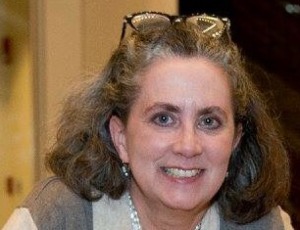Why We Still Love Fairytales
by Tracey Perez
 My phone’s lock screen is a meme that announces, “I never wanted to be a princess; I always wanted to be a witch.” I wish I could attest to the complete veracity of this statement; however, I must confess to a bit of prevarication. When I was five or six, my mother pulled me out of a theater viewing of Disney’s Snow White and the Seven Dwarfs when the transformation of the Evil Queen into the Wicked Witch caused me to break out into hives and run a fever. I begged to stay, but Mom was adamant.
My phone’s lock screen is a meme that announces, “I never wanted to be a princess; I always wanted to be a witch.” I wish I could attest to the complete veracity of this statement; however, I must confess to a bit of prevarication. When I was five or six, my mother pulled me out of a theater viewing of Disney’s Snow White and the Seven Dwarfs when the transformation of the Evil Queen into the Wicked Witch caused me to break out into hives and run a fever. I begged to stay, but Mom was adamant.
When it comes to fairytales from childhood, many of us have recollections of sweet stories of beautiful princesses, charming princes, kind godmothers, and benevolent wildlife. Memory, however, can deceive us. Reading fairytales as adults can lead to comments such as, “Those aren’t the stories I read” or “We read kid-friendly versions” or my favorite, “Disney wasn’t like that!” Yes, Disney fairytales were like that — complete with domestic violence, kidnapping, and even the threat of cannibalism. Perhaps more insidiously, they perpetrated notions of love at first sight and happily ever after. Nevertheless, we loved them; we love them still.
Do we love fairytales because they speak to universal human desires and concerns? Because even in their multiple transformations and adaptations across place and time, we recognize and are comforted by the familiar core of the stories? Because they remind us of an unknowable past, a mythic world where magic is real? I say yes to all this and more.
Fairytales continue to delight because they surprise us with each retelling. We continue to be transformed as the narratives themselves are transformed by the tellers. And after my traumatizing experience with Snow White, I determined to overcome my fear of the witch and ended up on a lifetime journey into the ever-reinventing and reformulating world of the fairytale, where sometimes the princess and the witch are one and the same.
Learn about Fairytales with Tracey
TWO THURSDAYS, APRIL 11 & 18: “Godmothers, Wolves, and Juniper Trees: What Is a Fairytale?” 6:00–8:00 p.m., virtual via Zoom. Info and registration
Once upon a time. We all remember those magical words from our childhoods that swept us away to a world of sleeping princesses, magic wands, and transformed beasts—often filtered through the lens of a Disney movie. Be warned: these are not those tales! How did fairytales transform from stories for adults to staples of childhood (and back again)? Why and how do other genres utilize fairytale motifs and archetypes? Do they all end happily ever after? Considering some of the earliest versions of familiar stories, recent retellings with strange twists, and lesser-known works, we will address these and other questions.
About Tracey
Tracey Perez is a fairytale and folklore scholar who teaches in the English Department at Queens University of Charlotte. She also facilitates therapeutic and legacy writing classes for cancer survivors. A native North Carolinian, Tracey holds a B.A. from Wake Forest University and received a graduate degree in Medieval Studies from University of North Carolina at Greensboro. When not teaching and researching, Tracey enjoys reading speculative fiction, binge watching historical fantasy series, and playing mah-jongg.
